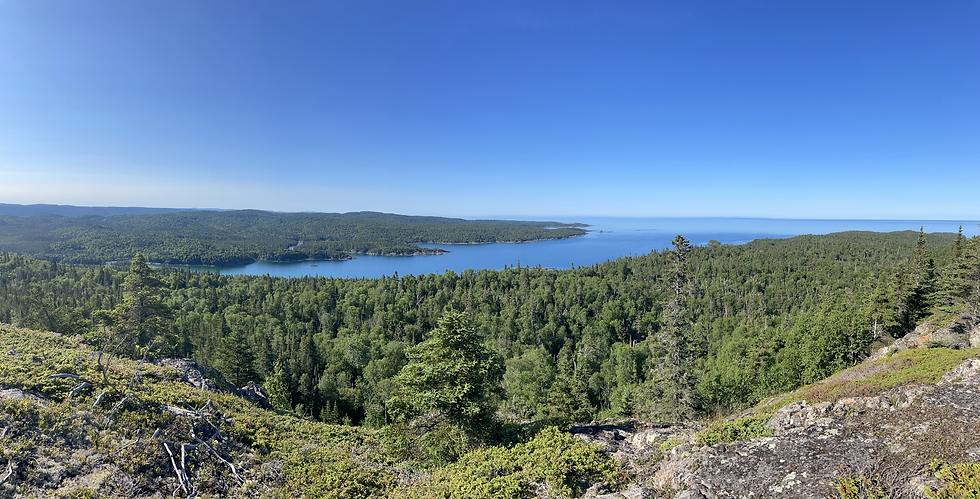All Trails Should Have a 'Shovel-Ready' Project, Here's Why
- Kirsten Spence

- Dec 13, 2021
- 3 min read
Updated: Oct 24, 2023
by Kirsten Spence and Jane McCulloch

Many trail organizations have lists a mile long of projects needed on their trails. This usually includes projects that need to be completed immediately, as well as others scheduled for upcoming build seasons or years; some are even 'wish-list' projects for the future. There may also be unanticipated projects, for example due to inclement weather or vandalism, and it is necessary for a funder to step in to help because a trail organization does not have the financial contingency to undertake these emergency repairs. Identifying these projects and having a trail plan is important, whether you are a volunteer organizations or not, is important for many reasons not the least of which is the risk management side of things.
So, What are 'Shovel-Ready' Projects?
We often hear about 'Shovel-Ready Projects', but what exactly does that mean and why
are they important? A 'Shovel-Ready' project is a clearly defined project that is scalable to the funding available and includes:
a budget (with other funding and in-kind inputs clearly indicated),
a list of project partners,
a clear implementation plan, and
measurable outcomes.
This allows submission for eleventh-hour and / or rapidly emerging funding requests, and puts your project ahead of those submitted by those organizations that are not prepared.
If an organization's trail committee has already reviewed and approved the project, the submission then becomes easier to customize to a grant call without having to call a Board meeting or solicit approval by emails.
Often times all that is required is a project description, and budget less than 2 pages, with more details potentially required at a later date (if funding is approved). The Board can always approve the funding use, and modified project scope, at a later date if the grant submission is successful. If you require permits for trail work, these are also documents you can proactively apply for and have ready to implement when funding is secured.
Having a range of 'shovel-ready' projects that allow for seasonal variation is essential.
Trail construction during the winter months is not feasible in most places in Canada, but a signage project is. Other projects can happen year-round.
Having different types of projects proactively identified and costed will help ensure your success. This is because funders typically have priorities for the funding that they have available. Having different 'shovel-ready' projects identified allows groups to pivot their existing projects and submit funding applications based on the funding body's focus.
Why have 'Shovel-Ready' Projects?
As the fiscal year end approaches for various levels of governments, pots of funding often
suddenly become available. This time of the year is often called the 'March Madness' of
the non-profit world. This recently happened in Ontario, where trail tourism funds
became available, and groups had a very narrow window to submit a project outline and
basic budget to be considered for the fund.
Another important instance of when having projects ready to submit for funding is when community service clubs, like Rotary or Kiwanis, put out a call for funding. These typically give organizations only a few weeks to prepare something to submit. Without something ready to go, volunteers are forced to pump the breaks on all other work to rush to cobble together a project for rapid submission. Sometimes this ends up being a much larger task, and sometimes it may not even be possible. This means many organizations therefore missing out on these essential funding opportunity.
Being a member of your provincial or territorial trail organization can also lead to funding opportunities. Having a good relationship with your local service clubs, government office staff and local municipal staff is also recommended. This can help smooth over permits for trail work, as well as with drafting land stewardship agreements, and with securing letters of support. Trail planning is the largest part of developing trails.
Construction is often the last step in the process after a large amount of work has been done, often spread over several years. Undertaking planning ahead of time will lead to organization's being able to capitalize on unanticipated opportunities.
Then, we can all win with and for trails.
Get In Touch
If you are interested in support for grant writing or want to learn more about developing 'shovel-ready' projects, including costing out future projects, to help guide your trail development process or trail tourism initiative, please reach out to us at: TheTrailResearchHub@gmail.com.
Additional resources
Creative Trails Canada - https://creativetrailscanada.com/
Terminus Consulting - https://www.terminusconsulting.ca/

